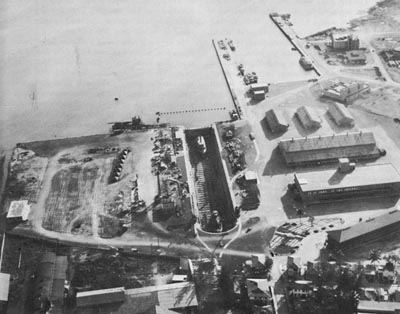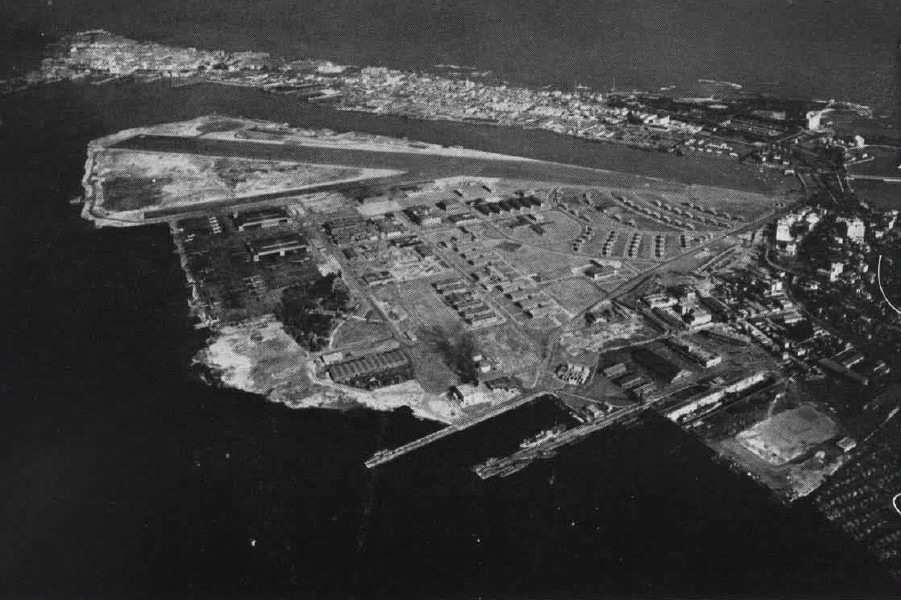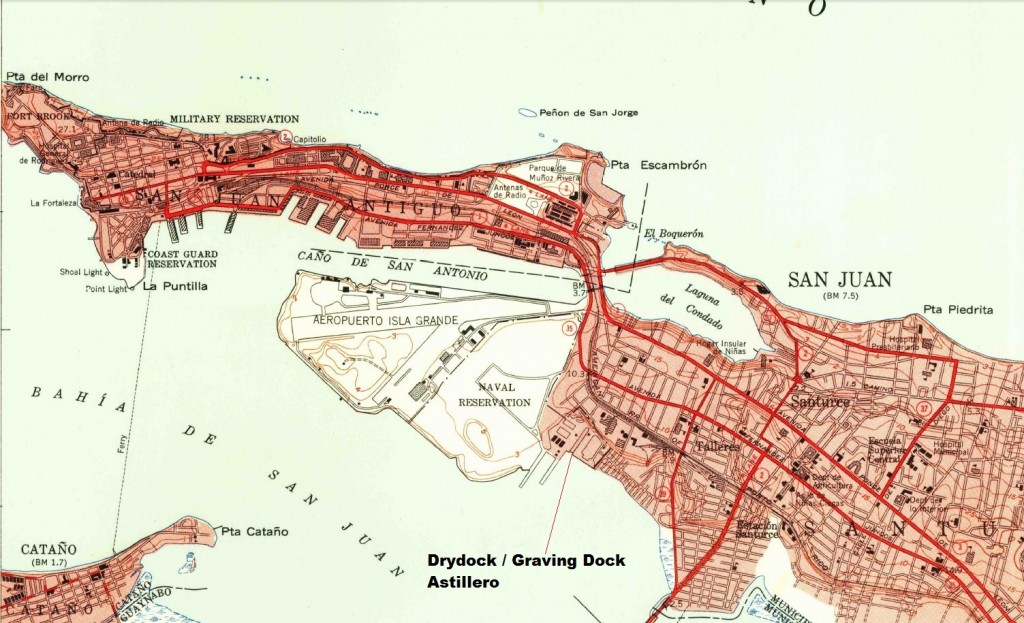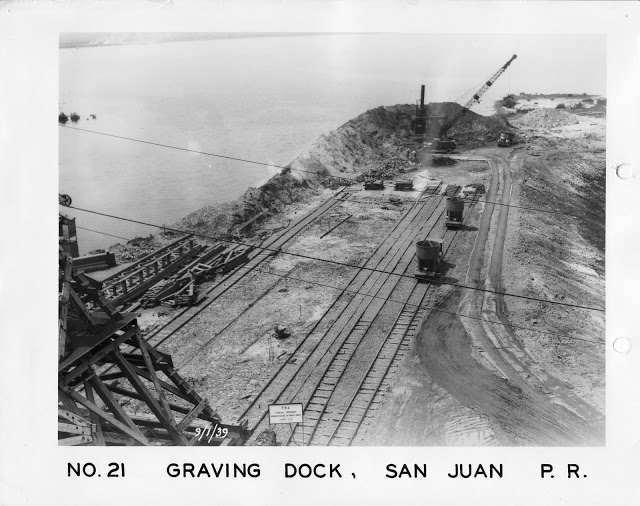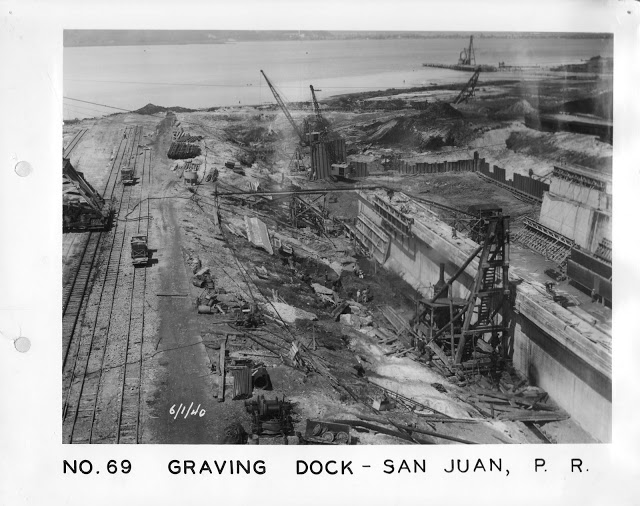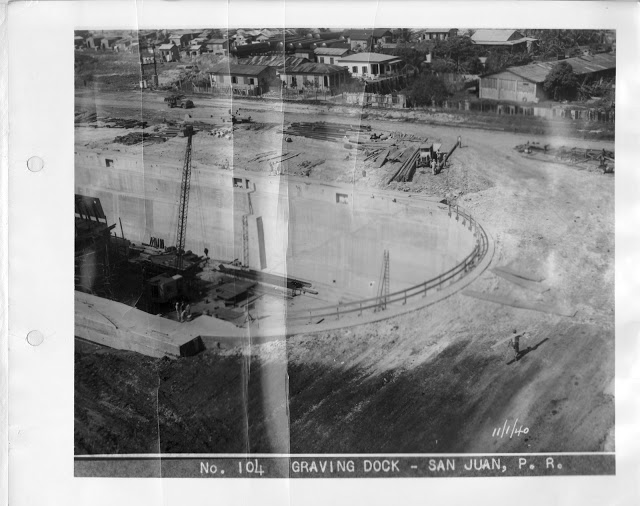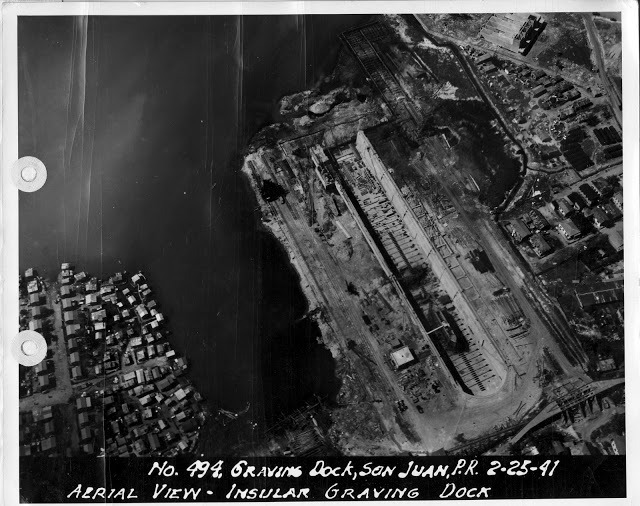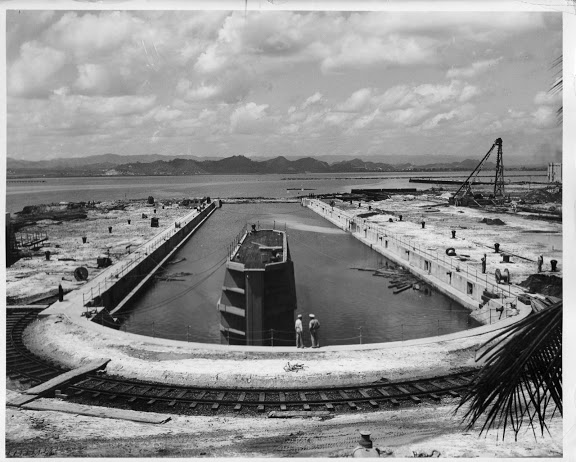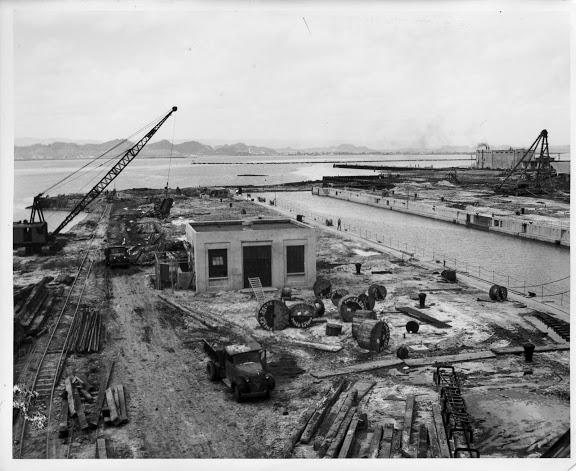The US Naval Air Station in San Juan had a drydock, built at the beginning of the World War II. Railroads were used to build the dock and in its operation. Docks were used for the repair and maintenace of ships. E.H. Latham Co., was the contractor.
La Marina de Estados Unidos construyó un astillero a principios de la Segunda Guerra Mundial. Se usaron ferrocarriles para su construcción y operación. El astillero era usado para reparaciones y mantenimiento de barcos. E.H. Latham Co., era el contratista.
Locomotora Grúa / Locomotive Crane. Photo: 71-CA-408D SJNSY – ARP1757 – Picasa Web Albums N.d. https://picasaweb.google.com/ARP1757/71CA408DSJNSY, accessed April 26, 2013.
—
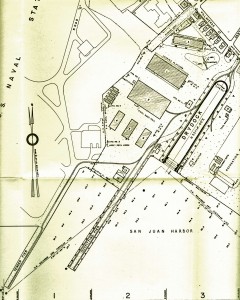 Drydock, US Navy
Drydock, US Navy
Colección Dave Deyo
—
Drydock Area, San Juan, Puerto Rico. Administration building (with tower) at right; outfitting and tender piers, upper right. P. 7.
Building the Navy’s Bases in World War II N.d. http://www.history.navy.mil/library/online/buildbaseswwii/bbwwii2.htm, accessed April 25, 2013. P. 5-9. (Navy Department Library)
—
United States Navy. [Photo] Aerial View of Naval Air Station San Juan, Puerto Rico, as It Appeared in the Jun 1947 Edition of the “US Navy Naval Aviation News”. World War II Database. Web. Accessed April 26, 2013.
<http://ww2db.com/image.php?image_id=9496>
—
Courtesy of the U.S. Geological Survey (San Juan, 1949, 1;30000)
Los mapas topográficos histórico del USGS se pueden ver en línea y bajar
US Historical Topographic Maps can be seen and downloaded
Ver / See
Search / Busque: San Juan
—
Photos: 71-CA-408X SJNSY – ARP1757 – Picasa Web Albums N.d. https://picasaweb.google.com/ARP1757/71CA408XSJNSY, accessed April 26, 2013.
NO. 21 GRAVING DOCK, San Juan, P.R. 1 September 1939. View of cofferdam fill looking south from top of concrete plant showing portion of head tower framework in extreme left foreground. Concrete forms being assembled on left center, concrete buckets on cars in center and crane placing fill in cofferdam in background. P.W.A. Project PR 1012-F E.H. Latham Co., contractor.
—
NO. 69. GRAVING DOCK, San Juan, Puerto Rico, 1 June 1940. General view of the south portion of the dock site showing in right foreground “A” frame rig pulling sheet piling on East side of completed dock wall approximately station 5-77. In middle distance is the 16” discharge line from 15” pump over pump sump station 3-97. In near background crane is setting and driving sheet piling for cut off wall station 2-31 and just beyond is crane excavating at pumpwell site. PWA Docket PR 1012-F, E.H. Latham Co., Contractors.
—
NO. 71. GRAVING DOCK, San Juan, P. R. 1 June 1940. View looking south on center line from above approximately station 7-50 showing part of bracing at head end, the completed walls and floor slab, the 15” pump and diesel engine in place 8 feet above the floor level at the far end of the slab. P.W.A. Project PR 1012-F, E.H. Latham Co., Contractor.
NO. 104 GRAVING DOCK, San Juan, P. R. – 1 November 1940. View of head end of the dock from top of concrete plant showing landfill almost complete. P.W.A. Docket PR 1012-F. E. H. Latham Co. contractor.
—
—
—
Photos: 71-CA-408D SJNSY – ARP1757 – Picasa Web Albums N.d. https://picasaweb.google.com/ARP1757/71CA408DSJNSY, accessed April 26, 2013.
Photo Collection: Andrew P., Chesapeake, VA. Picasa Web Albums – ARP1757 N.d. <https://picasaweb.google.com/ARP1757>, accessed April 25, 2013.
He obtained photos at NARA (National Archives and Records Administration) in College Park, MD. Email March 19, 2013.
Photos used with permission. / Fotos usadas con permiso.
—
There were two locomotive cranes, 20 ton Browning diesel-mechanical locomotives, 1941. They also had a Whitcomb engine. Tracks ran around the drydock and had connections to warehouse.
The cranes handled material for ship repairs as well as unloading supplies from ships at the other piers. The locomotive moved a small number of cars of these supplies from the piers to the large warehouse. One of the cranes went to Central Plata. The trackwork was
36″ gauge.
Operaban dos locomotoras grúas – 20 toneladas Browning diesel mecánicas, 1941. También tenían una locomotora diesel Whitcomb. Las vías estaban colocadas alrededor del muelle con conexión a los almacenes.
Las grúas se usaban para manejar material para la reparación de los barcos y en los muelles. Una de las grúas pasó a la Central Plata. El ancho de vía era de 36 pulgadas.
Email con Dave Deyo, Marzo 2013.
—
I thank John Taubeneck for letting me know of the website of Andrew P.
I thank Andrew P. for sharing these photos and allowing me to use them.


